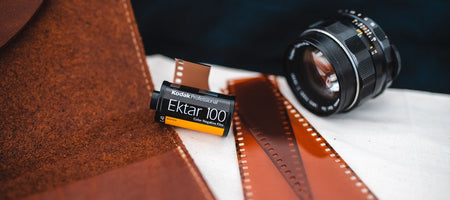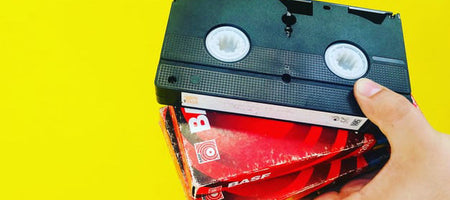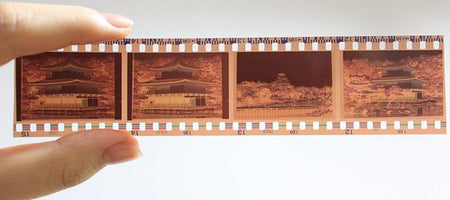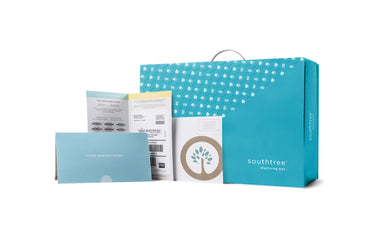Unless you’re the little boy from the Sixth sense, you’re like the rest of us five sense people. And in case you’re a little rusty on your grade school science, your five senses are taste, smell, sight, touch and sound. Each one used to get through daily functions and recall memories.
But with five senses all working both together and separately, which one trumps the rest?
Well, first let’s get a little more familiar with each – how they work, what part of the brain they stimulate and how they affect our memory.
Sight
Our eyes are incredible perceivers. Using a lens at the front of the eyeball, we can focus the images that we see onto the retina at the back of the eye, like the organic version of a mechanical camera. Our retinas are covered with two light sensitive cells – cones and rods. Cones allow us to see color and rods help with seeing when its dark and peripheral vision. All this happens in the blink of an eye (literally), as it sends the information to the brain via the optic nerve. Which is good because if it wasn’t for the brain, we’d be seeing everything upside down.
Part of the brain worked: The occipital lobe in the back of the brain and the temporal lobes, which are responsible for short-term memory, speech and music are the biggest receptors of sight.
Type of memory: Iconic memory
Fun fact: We can see between 2-7 million different colors
Touch
The feeling of touch is spread throughout the entire body via the largest organ in our body, our skin. So it must be the strongest sense, right? Not quite. While it is powerful due to our nerve endings shooting information into our brains (particularly when it comes to pain), it’s not the top sense. As humans, we can experience four touch sensations: cold, heat, contact and pain. Furthermore, the hair on our skin can almost act as a type of Spidey sense, like the web slinging superhero, increasing the sensitivity like the body’s own early warning system.
Part of the brain worked: The parietal lobe is the main receptor for touch, as it processes the primary somatic sensory cortex. It gives you that sense of ‘me.’
Type of memory: Haptic memory
Sound
Hearing is much more than just sounds. It aids in our equilibrium, keeping us balanced and focused. But sorry ears, you’re still not the top sense. Our ears are made of two separate parts – outer and inner (pretty simple, right?). The outer works like a satellite, catching sound and funneling it into the inner ear, which contains the three smallest bones in your body. As the spiral-like inner ear sends the vibrations that the outer ear captured via the auditory nerve to the brain, it processes these vibrations into the sounds we know as well as the direction from which they came.
Part of the brain worked: The auditory nerve connects your inner ear directly to the auditory cortex (which has three parts: primary, secondary and tertiary) on both the right and left side of the brain.
Type of memory: Echoic memory.
Research has shown that hearing words associated with sounds, rather than just the sounds alone, can aid memory. Music is also a huge proponent in nostalgia and memory recall, like those songs that transports you back in time.
We can hear approximately 350,00 different tones
Taste
What would the world be like if we couldn’t enjoy every savory bite of a pizza? A bad, bad place that’s what. But while taste is largely responsible for our enjoyment of food, it’s still doesn’t take the top spot. In fact, if it weren’t for our sense of smell, most of what we tasted would be simply bland textures. As one of the strongest muscles in the body, our tongues are responsible for gauging temperatures, ensuring that we don’t torch our mouths on that hot, fresh out of the oven mozzarella cheese.
Part of the brain worked: Just like touch, the parietal lobe is responsible for our mealtime escapades in taste.
Type of memory: N/A
Oddly, there isn’t a memory term specially coined for taste, but that doesn’t mean there isn’t a connection. However, that memory recall isn’t because of your taste buds, it’s because of your sense of smell …
Smell
If you didn’t sniff this answer coming by now, then you need your nose checked. Smell is in fact the strongest human sense, and contrary to popular belief, may be just as powerful as the snout sniffers in dogs and rodents (to certain degrees). Our olfactory receptor neurons, which are located behind your sinuses and are the only neurons in your body that are exposed to air, make physical contact with whatever molecules compose an odor. Then they instantly send that info straight to the brain. Our sense of smell is so strong that it aides dramatically in how we perceive taste – even going as far as affecting our behavior, emotions, perceptions and memories, more so than any other of our sense.
Think of it this way: Seeing vomit might make you want to throw up but smelling vomit is what ultimately triggers your gag reflex.
Part of the brain worked: The piriform cortex, which is a collection of neurons located behind the olfactory bulb, works to identify smell.
Type of memory: Olfactory memory
Because the olfactory bulb and cortex are so close physically to the hippocampus and amygdala (huge factors in memory retention), smell is considered the strongest and quickest memory inducer. Smell is also in cahoots with the brain’s limbic system, which controls emotion, making smell the biggest nostalgia and behavior catalyst of the sensory bunch.
We can detect 1 trillion different smell stimuli
So your smell may be the strongest of your senses, especially when it comes to memory recollection, but that doesn’t mean your other senses deserve any less credit for your moments of nostalgic bliss. After all, you can’t smell a picture … well, you can but that’s just weird. And speaking of pictures, if you’ve got a collection of old family photos and film, now’s the perfect time to digitize those analog memories before they fade away with father time.













